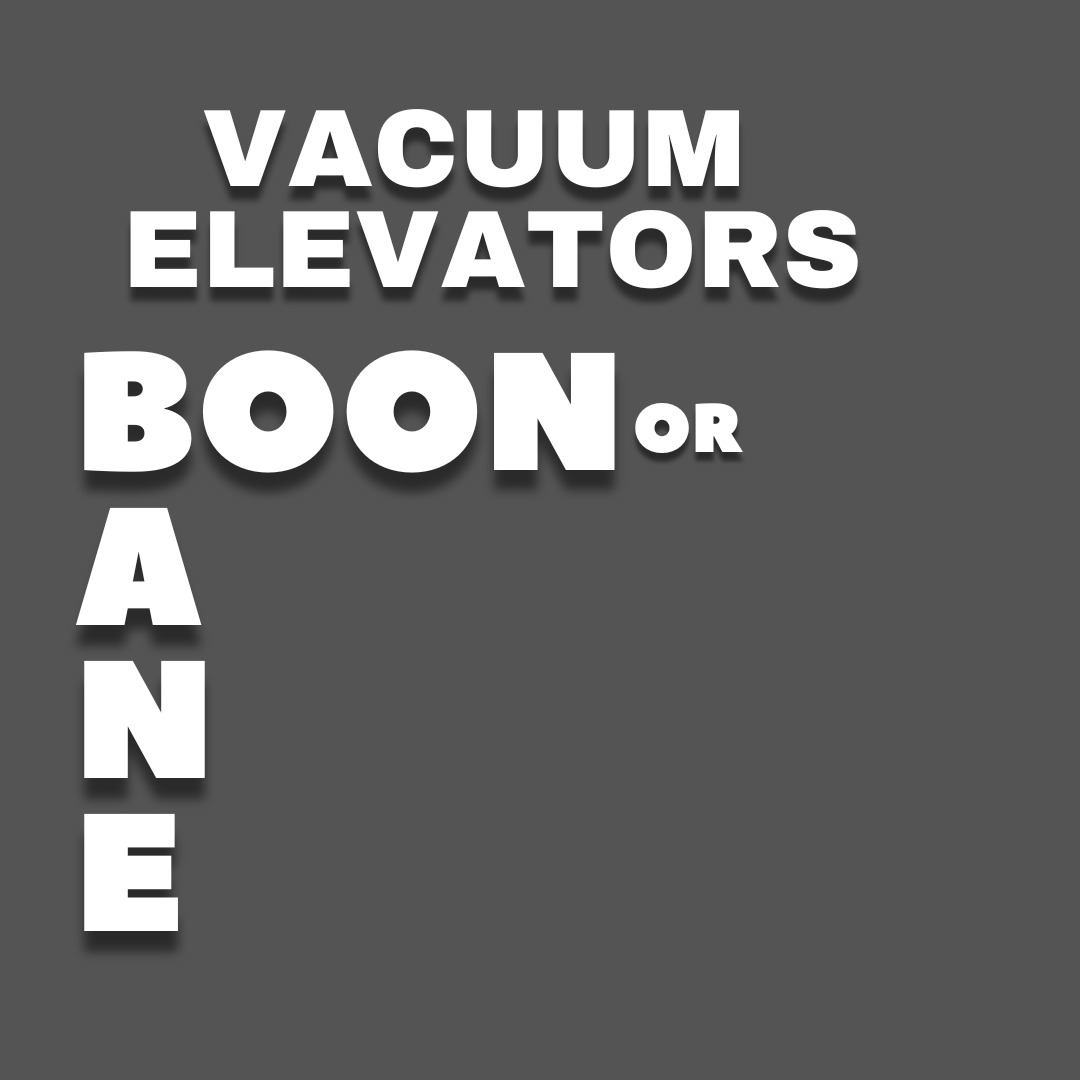Vacuum elevators have been touted as the panacea for home elevator installations in recent years. They do offer certain advantages in regards to space requirements and for installation in existing homes that may not have a previously constructed hoist way. Almost every architect has been faced with the dilemma- whether to opt for easy to install pneumatic elevators or stick to conventional traction or hydraulic home lifts.
Vacuum or pneumatic elevators move up and down due to changing air pressure and not using motor driven ropes. The elevator car and exterior tube are usually made of polycarbonate walls around aluminium structure. The roof of the tube is made of steel and the suction assembly – elevator controller, turbines and vacuum valves is usually positioned on top.
Internationally codes and certifications do exist for vacuum elevators. The vacuum elevator should ideally have the following safety devices:
- A pressure switch that will not allow car locks to release if there isn’t adequate air pressure for an ascent.
- Brakes that engage within 2 inches in the event of a “free fall”.
- In the event of loss of power, the car automatically descends to the ground floor and the car door/gate opens mechanically.
- Battery backup for electrical system.
- Door safety switches.
- Alarm system, emergency ventilation and telephone in car.
The Indian Standard IS 15259 – the code of practice for installation and maintenance of home lifts deals with lifts specifically designed for a private home up to 4 stops (maximum rise of 12 meters) where the usage of the lift is restricted primarily to residents of the private home. The home lift shall have a capacity of not less than 204 kg (3 passengers) and not more than 272 kg (4 passengers).
Lifting mechanism could be
a) A simple drum type machine using a single-phase electric motor installed directly in the hoist way or in a suitable protected place.
b) A traction machine placed in the hoist-way or a suitable protected place (Provisions of IS15785 for MRL elevators shall apply).
c) Hydraulic jack driven by a pump transmitting hydraulic fluid (Provisions of IS14671 for hydraulic elevators shall apply).
Overhead shall not be less than 2900mm provided that top clearance from highest point of car shall not be less than 225mm when car is at top landing. The pit depth shall be such that when car is resting on fully compressed buffer, the free distance between pit floor or any equipment installed in pit and lowest point of car shall not be less than 50mm. If minimum clear space of 500mm is not available under the platform at its lowest position, a manually positioned mechanical blocking device shall be provided- to hold the platform in a raised position for maintenance- with clear space of 500mm below. As on date, vacuum elevators are not compliant with the Indian Standard.
It is very clear that for new constructions, the better option is to make provision for MRL or hydraulic elevator covered by the existing codes and standards. Which brings us to the question of providing elevators- usually for the elderly in existing homes where no hoist way is available.
Most of the vacuum lifts available in India do not have a car gate, nor are the vendors able to satisfactorily demonstrate the provision of safety devices as detailed earlier. In fact, there is ongoing litigation regarding flagrant violation by some vendors of the various State Lift and Escalator Acts. Additionally, most of the vacuum elevators available in India cannot accommodate wheelchairs- this defeats the purpose to a certain extent. Vacuum elevators do throw up some interesting possibilities- however from the safety perspective one should opt for equipment that is governed by the Indian codes and standards.
